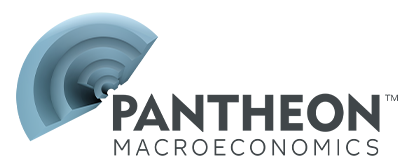US Publications
Below is a list of our US Publications for the last 5 months. If you are looking for reports older than 5 months please email info@pantheonmacro.com, or contact your account rep
Please use the filters on the right to search for a specific date or topic.
- Consumers’ major purchase intentions have fallen sharply, signalling flat spending on durable goods.
- NRF and Redbook data point to a drop in retail sales in September, ending a strong three-month run.
- Most measures of spending on discretionary services have weakened, consistent with a lackluster Q4.
Shutdown hit limited for now, but strong headwinds remain.
- September’s payroll report likely will be released about three working days after the shutdown ends.
- October payrolls will be unaffected by the shutdown, but the unemployment rate will be lifted by 0.2pp.
- The rotation of the regional Fed voters implies a slight hawkish shift in the FOMC early next year.
- AI capex—net of tech imports—lifted H1 GDP growth by an annualized rate of around 0.3pp.
- The boost to spending due to the wealth effect from surging tech stocks likely has been similar.
- That suggests to us that weaker growth is more likely than a recession if the AI boom turns to bust.
- The NY Fed survey suggests the mood among consumers was souring again even before the shutdown.
- The weak labor market and further upward pressure on inflation from tariffs are the most likely culprits.
- Alternative indicators of payrolls are even worse guides to the final estimates than the initial prints.
- Indicators from Revelio, QuickBooks and Paychex are all essentially useless guides to official payrolls.
- Combining NFIB, Conference Board and regional Fed survey data is the only way to beat the consensus.
- We look for a 75K rise in September private payrolls, above these surveys, due to residual seasonality.
An unreliable guide to growth in services spending.
- Households have delevered over the last five years and many have fixed-rate mortgages with low rates.
- Reducing the funds rate to 3% next year merely would stabilize the effective mortgage rate.
- The weakness in the ISM surveys in Q3 probably is understating the economy’s underlying momentum.
Manufacturing is going nowhere fast.
- The impact of AI on labor demand so far looks small, even for the most at-risk occupations.
- The payroll slowdown this year has far more to do with trade and immigration policies.
- Auto sales are set to weaken, as an EV tax credit expires and tariffs start to push up prices.
Worsening job availability points to a further rise in the unemployment rate.
Drops in the openings-to-unemployment ratio and quits signals slower wage growth ahead.
- The government shutdown will hold up key data releases and likely will drag on economic growth.
- Another 25bp easing from the Fed at its next meeting seems like prudent risk-management.
- The effective tariff rate has now crept up to just 12%, and a further climb is likely in the next few months.
- JOLTS openings ticked up slightly in August, but the underlying trend in labor demand still looks weak.
- Conference Board’s labor market numbers point to stagnant payrolls and higher unemployment.
- The shifting balance in the labor market points to weaker underlying wage growth ahead.
Lower mortgage rates start to lend a hand.
- Reliable surveys point to September payrolls rising at a similarly slow pace as the past couple months.
- Seasonal problems signal a jump in hospitality jobs, but federal policies likely weighed on education jobs.
- The unemployment rate likely crept up, while a calendar quirk probably dampened average earnings.
Turnaround in consumers’ spending built on shaky foundations.
- Spending numbers up to August point to 3% growth in third quarter consumption...
- ...But that pace looks unsustainable, given the myriad headwinds facing households.
- Real after-tax incomes are flatlining, the saving rate is already low, and balance sheets are more fragile.
High prices are holding back sales.
